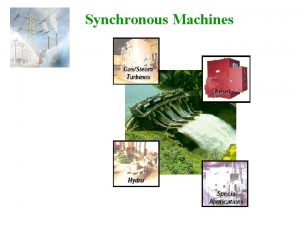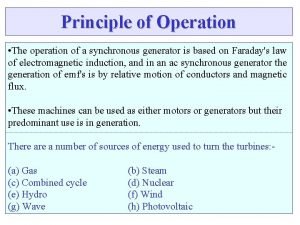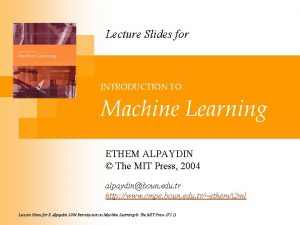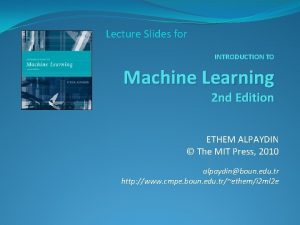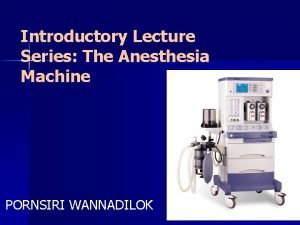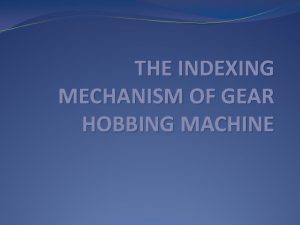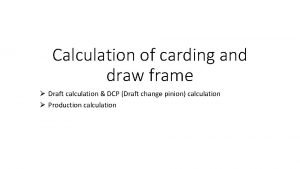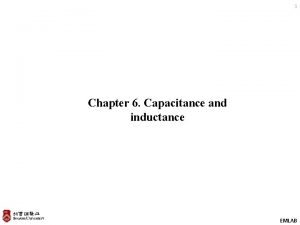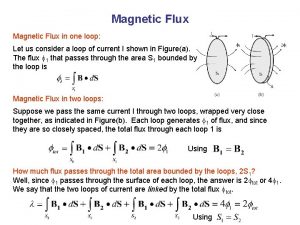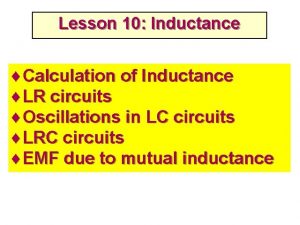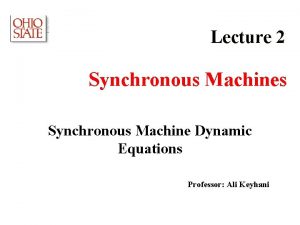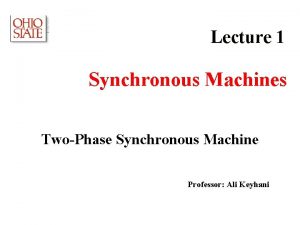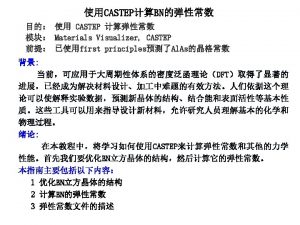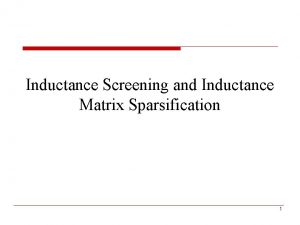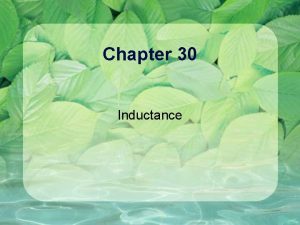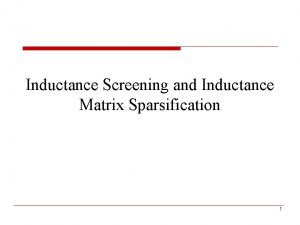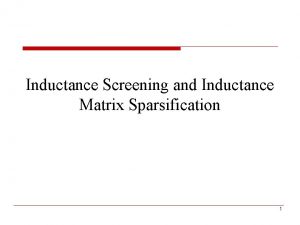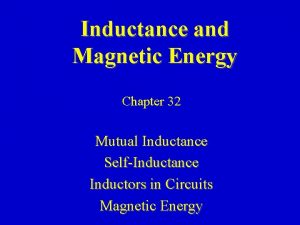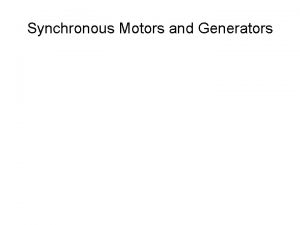Lecture 3 Synchronous Machine Modeling Inductance Calculation and













- Slides: 13

Lecture 3 Synchronous Machine Modeling Inductance Calculation and Turn-ratio Transformation Professor: Ali Keyhani

Inductance Calculation and Turn-ratio Transformation All the inductances can be calculated from physical dimension of the machine. The magnetizing inductance for phase as is: where, = axial length, = inner radius of stator From Fig. 1, we can define: The as-as’ winding distribution Fig. 1 2

Inductance Calculation and Turn-ratio Transformation The air gap distribution where, Hence, when And when , , Substituting (2) and (3) into (1) and integrating, we will have 3

Inductance Calculation and Turn-ratio Transformation Let us define: In terms of physical dimensions, the d-axis mutual and magnetizing inductances are: 4

Inductance Calculation and Turn-ratio Transformation It can also be shown 5

Inductance Calculation and Turn-ratio Transformation Let us define the quantity as , the direct-axis magnetizing inductance. From the above equations, it is apparent that all of the following quantities are equal: We should remember that by definition = the direct-axis magnetizing inductance 6

Inductance Calculation and Turn-ratio Transformation Note also that the and are The d-axis flux linkage equations, that is, the equations (47), (50) and (51) of Lecture 2 a, can be manipulated into the form: 7

Inductance Calculation and Turn-ratio Transformation Multiply (50) by and manipulate the equation. Define: 8

Inductance Calculation and Turn-ratio Transformation Define: Utilizing the above definitions and noting equation (14), the above flux linkage equations can be written as: Similarly, the q-axis flux linkage equations can be written as: 9

Inductance Calculation and Turn-ratio Transformation where, and = the quadrature axis magnetizing inductance 10

Inductance Calculation and Turn-ratio Transformation Voltage equations: The d-axis equations are: No change is needed in the following way: . and can be transformed in the 11

Inductance Calculation and Turn-ratio Transformation Defining: Using the above and previous defined quantities, the voltage equations referred to the stator are: Similarly, the q-axis voltage equations referred to the stator are: 12

Inductance Calculation and Turn-ratio Transformation where, Finally, it should be noted that the 0 -axis flux linkage and voltage equations are not affected by turn ratio transformation and remain the same. 13
 Role modeling theory
Role modeling theory Relational vs dimensional data modeling
Relational vs dimensional data modeling Cylindrical
Cylindrical Principle of operation
Principle of operation 01:640:244 lecture notes - lecture 15: plat, idah, farad
01:640:244 lecture notes - lecture 15: plat, idah, farad Introduction to machine learning slides
Introduction to machine learning slides Machine learning lecture notes
Machine learning lecture notes Introduction to machine learning slides
Introduction to machine learning slides Intermediate pressure system anesthesia machine
Intermediate pressure system anesthesia machine Indexing in milling machine head part calculation
Indexing in milling machine head part calculation Gear hobbing definition
Gear hobbing definition Carding calculation
Carding calculation Inductance formula
Inductance formula How to find magnetic flux
How to find magnetic flux


